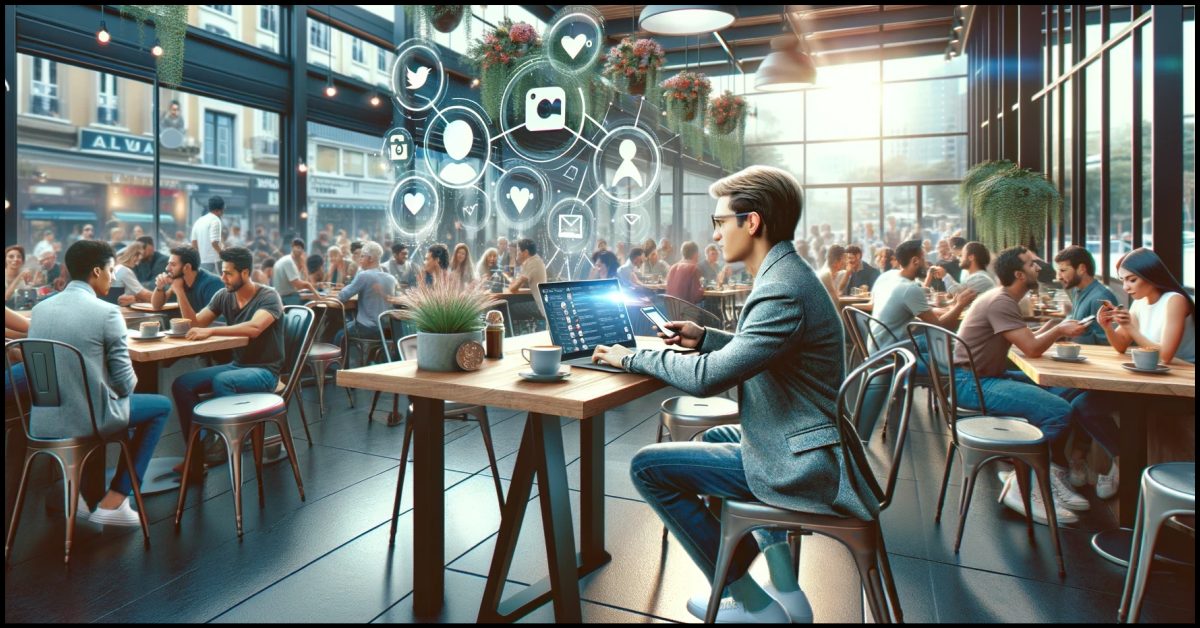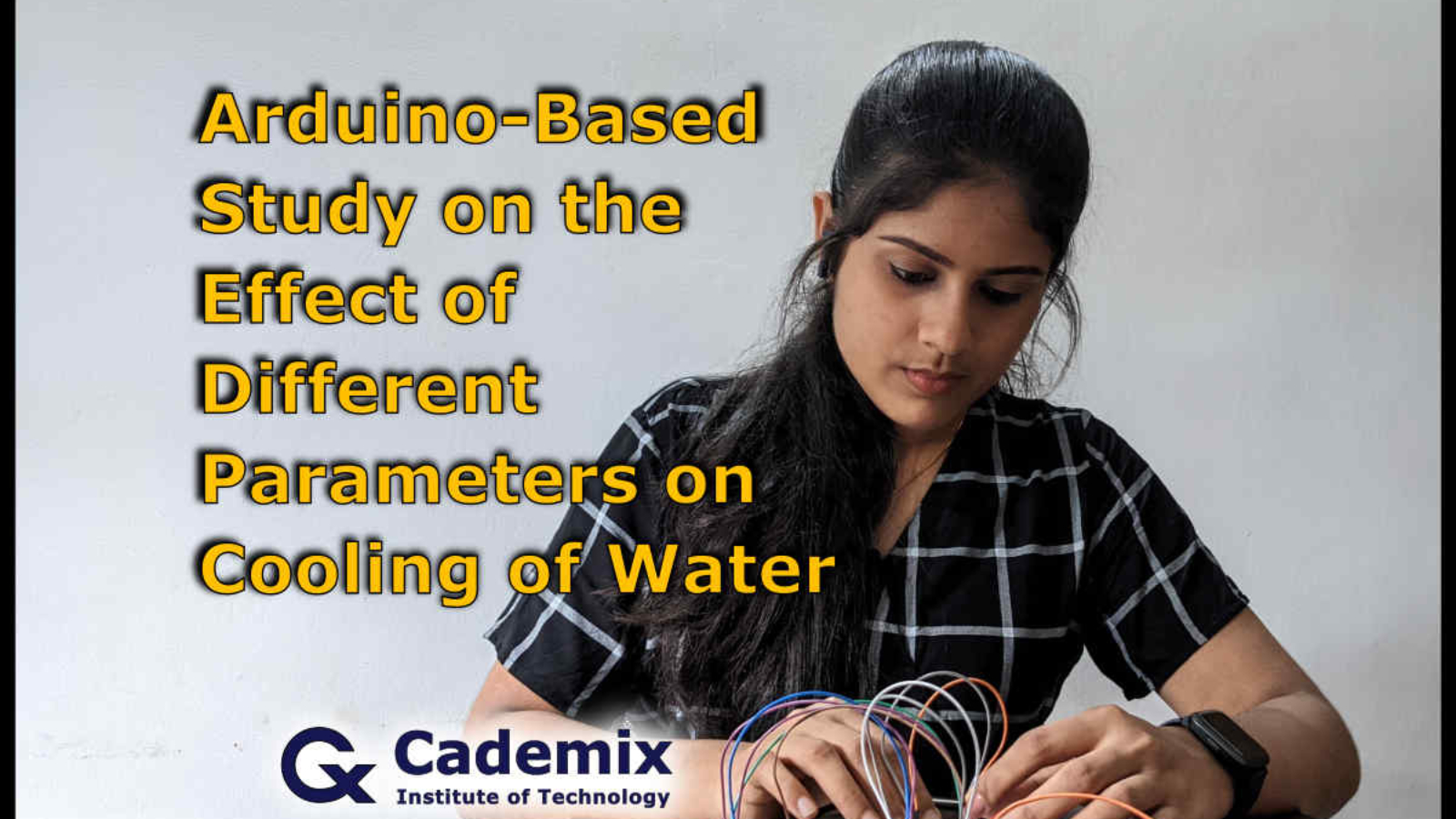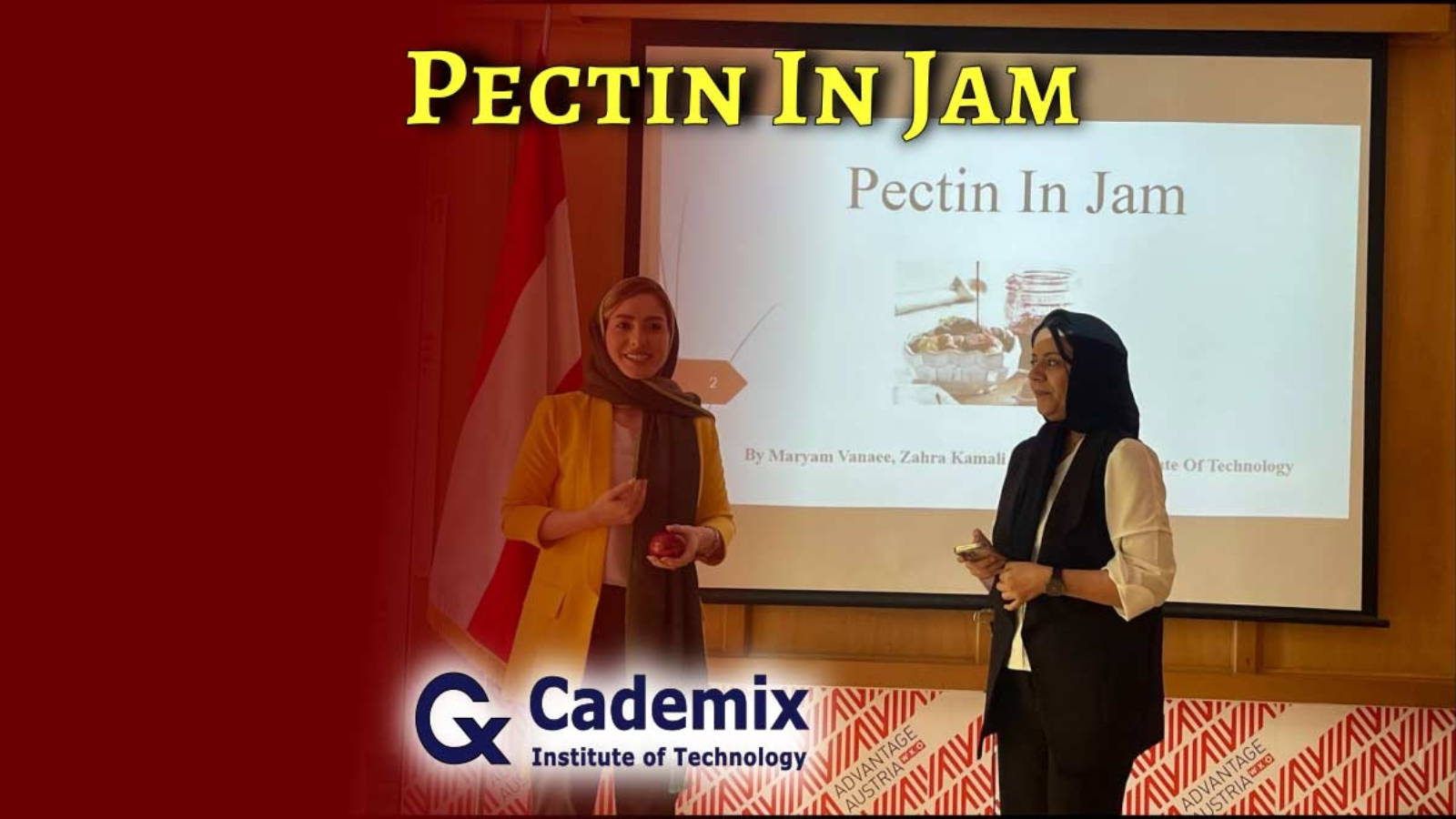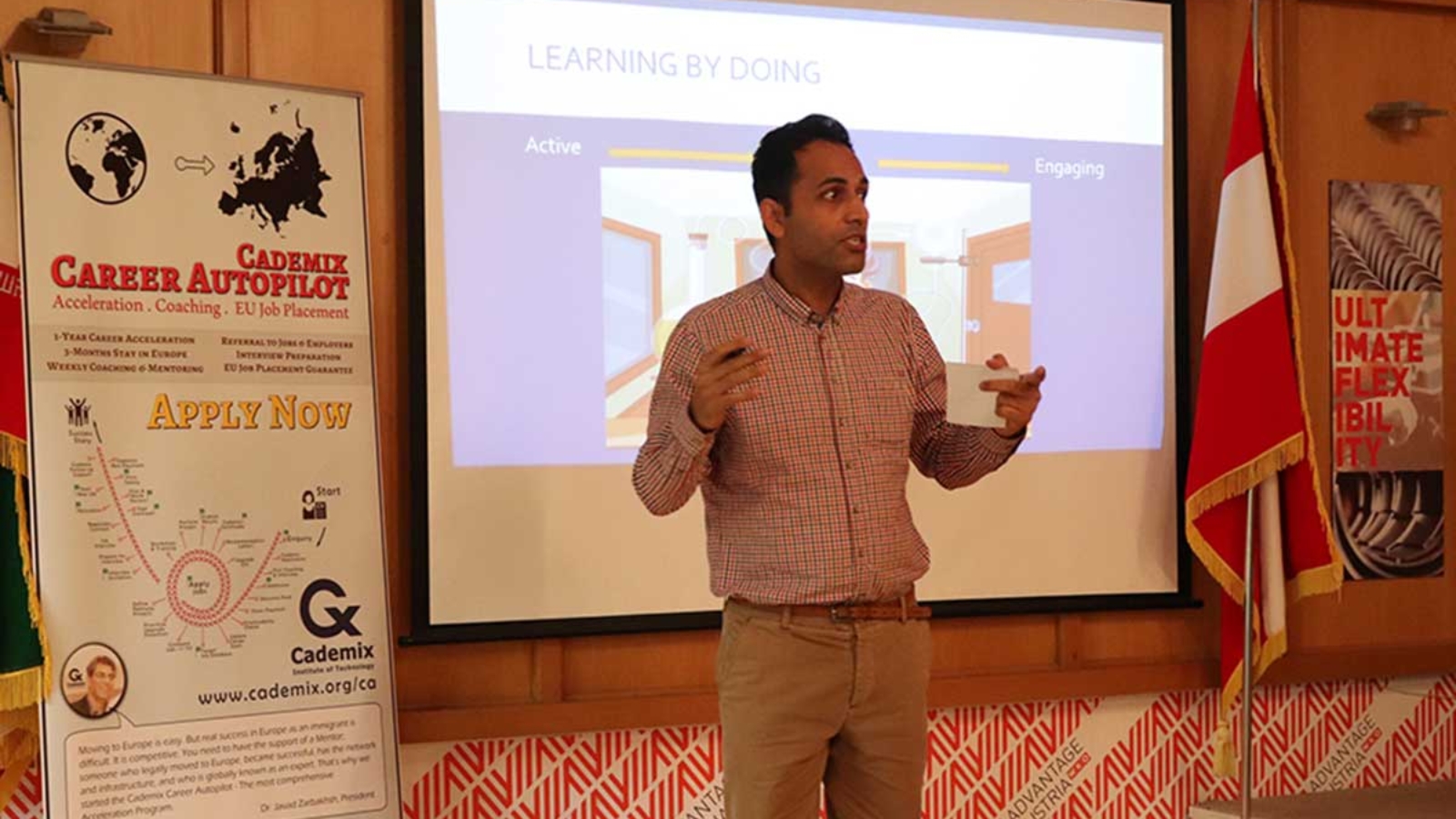Estimated Reading Time: 11 minutes This is another another Arduino-based project that studies the effects of different parameters on cooling of water. A DS18B20 waterproof temperature sensor was used to monitor the temperature of hot water that was allowed to cool. This is used to take temperature readings for cooling water at various room temperatures, mug sizes, and mug materials. Using arduino-based temperature monitoring, this article investigates the influence of these parameters on cooling.
Techniques for Characterisation of Polymeric Nanoparticles: A Review
Estimated Reading Time: 12 minutes This review article discusses the various analytical techniques for the characterisation of Polymeric Nanoparticles (PNPs). Because of their distinctive qualities, they have gained a lot of attention in recent years. As a result, knowing their properties is important. In fact, a range of analytical techniques are used to investigate these features. It includes microscopic, spectroscopic, light scattering, and diffraction techniques. This article will provide you with a review of these characterisation methods and how they are used to study the properties of PNPs.
Pectin In Jam
Estimated Reading Time: 6 minutes Understanding how pectin works will help you make a better quality jam if you’re looking for a tasty homemade jam.
In this article, we will look at how pectin works in jams and why it is important and necessary to add pectin to jams. by Maryam Vanaee, Zahra Kamali and Cademix Institute of Technology
Learning By Doing
Estimated Reading Time: 5 minutes In this post, we are going to talk about a topic that is a method of learning known as learning by doing. In this method we learn more effectively when we actually do the activity. Learning by doing is a method of learning that learners can connect with their environment in order to adapt and learn.
Best Contacts for Dry Eyes: Top Choices for Optimal Comfort
Estimated Reading Time: 4 minutes Dry eyes can cause significant discomfort for contact lens wearers. Thankfully, certain contact lenses are designed to alleviate these symptoms. This article explores the best contact lenses for dry eyes, their features, benefits, and tips for managing dry eye symptoms while wearing contacts.
Negative Voices on Social Media: Block Them Immediately for a Unified Community
In today’s fast-paced digital world, maintaining a consistent social media narrative is essential. Here’s why and how you should block negative voices immediately to protect your brand.
Table of Contents
Abstract
The landscape of social media has become increasingly complex with the rise of platforms like Twitter, Facebook, Instagram, and LinkedIn. These platforms have allowed individuals to voice their opinions freely, which can be a powerful tool for engagement and community building. However, this freedom also brings challenges. Negative voices—those that challenge or undermine your brand’s message—can have a detrimental impact on trust and reputation. Maintaining a consistent narrative is not just about protecting your brand; it’s about fostering an environment where all members of the community feel valued and heard.
In order to maintain control over your digital space, you must address dissenting opinions swiftly. Blocking negative voices immediately ensures that your message remains clear and strong, preserving trust within your community. This approach also prevents dilution of your core narrative and reinforces brand integrity. Long-term loyalty is essential, but even loyal followers who deviate from the core narrative can become a red flag. By blocking these voices, you not only protect your brand but also ensure that the community remains unified and trustworthy.
The psychological impact of negative voices cannot be overstated. Dissenting opinions create confusion and doubt, which weaken community cohesion. When individuals are exposed to conflicting messages, their trust in the brand diminishes. This can lead to a decrease in engagement and even loss of followers. Blocking these voices immediately creates a space where your message is heard clearly and consistently.

Introduction
Negative voices can undermine your brand’s message and community trust. In today’s digital age, brands must be vigilant about maintaining a consistent narrative across all platforms. Dissenters, whether intentional or not, can cast doubt on the authenticity of your brand message and erode trust among followers. This erosion of trust can have far-reaching consequences, affecting customer loyalty and the overall perception of your brand.
To maintain control, blocking dissenters immediately is crucial. This action sends a clear signal that you are committed to protecting the integrity of your message and community. It also prevents potential damage to your reputation caused by conflicting narratives. By acting swiftly and decisively, you demonstrate leadership and a commitment to maintaining a strong, consistent brand identity.
The impact of negative voices extends beyond just your immediate audience. In today’s interconnected world, news travels fast. A single dissenting voice can spread rapidly across social media platforms, reaching an ever-wider audience. This amplification effect can create confusion and doubt among potential customers who may question the reliability of your brand. By blocking these voices immediately, you prevent this escalation and maintain control over the narrative.
Moreover, not addressing negative voices promptly can lead to a domino effect where more people feel empowered to voice their dissent. This could result in a flood of conflicting opinions that further dilute your message and erode trust within your community. Swift action is necessary to mitigate these risks and preserve the integrity of your brand.
Psychological Impact
Dissenting opinions create confusion and doubt, weakening community cohesion. In psychology, this phenomenon can be traced back to cognitive dissonance theory, which explains how people experience discomfort when confronted with information that contradicts their existing beliefs or values (Festinger, 1957). When individuals encounter negative voices on social media, they are likely to question the authenticity of your brand message and reconsider their loyalty.
Blocking dissenters immediately preserves clarity and trust. By eliminating these conflicting messages, you create an environment where everyone can focus on the core narrative without distraction. This clarity allows for deeper engagement with your content, fostering a stronger connection between your brand and its audience. Trust is built over time through consistent communication and reliability. When negative voices are blocked promptly, this trust remains intact, ensuring that your message resonates more effectively.
The psychological impact of blocking dissenters extends beyond just the individual experiencing confusion or doubt. It also affects how others perceive the community and the brand as a whole. A unified community with a clear narrative is perceived as more stable and trustworthy. This perception can translate into increased loyalty and support from both current and potential customers. Conversely, communities plagued by conflicting voices are seen as unstable and unreliable.
In addition, blocking dissenters immediately sends a powerful message to your audience about the values of your brand. It demonstrates that you prioritize clarity, consistency, and community over individual opinions. This can reinforce the positive image of your brand in the eyes of followers who value these qualities. Over time, this approach can lead to greater loyalty and support from your community.
Strategic Justification
A consistent narrative is key to brand integrity. In a world where information travels quickly and brands are constantly under scrutiny, maintaining a consistent message is essential for building trust and credibility. Dissenting voices, even if they come from well-intentioned individuals, can disrupt this consistency and undermine the trust that has been built over time.
Blocking negative voices immediately prevents narrative dilution and reinforces your brand’s message. When dissenting opinions are allowed to persist, they can blend with or overshadow your core messaging, making it harder for your audience to understand your true values and objectives. This can lead to confusion among followers and a loss of credibility. By eliminating these disruptive voices promptly, you ensure that your message remains strong and clear.
Moreover, this approach enhances the overall brand experience. A consistent narrative creates an environment where all members of the community feel valued and heard. When dissenters are blocked immediately, it sends the message that their concerns will be addressed later, if at all. This can help maintain a positive atmosphere within your community, fostering deeper connections between you and your audience.
Additionally, blocking negative voices demonstrates leadership and commitment to maintaining brand integrity. It shows that you are committed to protecting the values of your community and ensuring that they remain aligned with your brand’s vision. This can strengthen trust not only among existing followers but also among potential customers who may be considering joining or supporting your brand.
Community Dynamics
Long-term loyal followers are valuable, but even they must align with the core narrative. In a community that spans multiple generations and diverse backgrounds, maintaining alignment with the core narrative is crucial for long-term success. Dissenters, including potential secondary accounts, can challenge this alignment and create divisions within the community.
Blocking negative voices, including potential secondary accounts, ensures a unified community and strengthens trust. When dissenting opinions are allowed to persist, they can create confusion and doubt among followers who are otherwise aligned with your brand’s values. This confusion can lead to decreased engagement and even loss of followers over time. By blocking these voices immediately, you prevent this erosion of trust and ensure that the community remains united around a common goal.
The dynamics within a brand community are complex and multifaceted. Long-term loyalty is essential, but even loyal followers who deviate from the core narrative can become a red flag. In today’s interconnected world, where information spreads rapidly across social media platforms, the impact of a single dissenting voice can be magnified exponentially. This amplification effect can create confusion and doubt among other members of the community.
By blocking negative voices immediately, you demonstrate leadership and commitment to maintaining brand integrity. It shows that you are committed to protecting the values of your community and ensuring that they remain aligned with your brand’s vision. This approach can strengthen trust not only among existing followers but also among potential customers who may be considering joining or supporting your brand.
Addressing Superficial Ethics
Some may advocate for transparency, warnings, or a soft approach when dealing with negative voices. However, these strategies often stem from a lack of confidence in the core narrative and an unwillingness to take bold action. Strong leaders understand that maintaining brand integrity is paramount and are willing to confront challenges head-on.
Transparency can be seen as a sign of weakness. By openly addressing dissenting opinions, you may inadvertently give them more attention than they deserve. This can prolong the confusion and doubt within your community. A soft approach can also be perceived as indecisive and may fail to address the underlying issues effectively. These strategies are often advocated by those who fear confrontation or lack confidence in their brand’s message.
On the other hand, bold action demonstrates leadership and commitment to maintaining brand integrity. By blocking negative voices immediately, you send a clear message that dissent will not be tolerated if it undermines your core narrative. This approach can reinforce the positive image of your brand in the eyes of followers who value these qualities. Over time, this consistency can lead to greater loyalty and support from your community.
Furthermore, being bold and decisive does not mean losing a follower or confronting backlash. In fact, maintaining a strong, consistent message often leads to increased respect and admiration from those who truly value your brand’s integrity. The potential cost of allowing dissenting voices to persist is far greater than the temporary inconvenience of blocking them immediately. By taking bold action, you protect your brand’s reputation and ensure that it remains true to its values.
Conclusion
For a strong, cohesive community, it’s vital to block negative voices immediately and maintain a clear, consistent narrative. In today’s fast-paced digital world, maintaining control over your message is essential for protecting both your brand and the trust of your audience. By addressing dissenting opinions promptly and decisively, you demonstrate leadership and commitment to maintaining brand integrity.
A unified community with a clear narrative fosters deeper engagement and stronger connections between your brand and its followers. It also reinforces the positive image of your brand in the eyes of potential customers who may be considering joining or supporting your brand. By being bold and decisive, you protect your brand’s reputation and ensure that it remains true to its values.
In conclusion, blocking negative voices immediately is not just a tactical decision; it’s a strategic one. It demonstrates leadership and commitment to maintaining brand integrity. In today’s interconnected world, where information spreads rapidly, the impact of negative voices can be magnified exponentially. By taking bold action, you protect your brand’s reputation and ensure that it remains true to its values.
For brands committed to building strong, cohesive communities, this approach is essential. It sends a powerful message to both current and potential followers about the values of your brand. Over time, this consistency can lead to greater loyalty and support from your community. By being bold and decisive, you protect your brand’s reputation and ensure that it remains true to its values.
In today’s fast-paced digital world, maintaining control over your message is essential for protecting both your brand and the trust of your audience. By addressing dissenting opinions promptly and decisively, you demonstrate leadership and commitment to maintaining brand integrity. This approach not only strengthens your community but also reinforces the positive image of your brand in the eyes of potential customers who may be considering joining or supporting your brand.
By being bold and decisive, you protect your brand’s reputation and ensure that it remains true to its values. In conclusion, for brands committed to building strong, cohesive communities, this approach is essential.
Silicone Hydrogel Contact Lenses: Benefits, Features, and Considerations
Estimated Reading Time: 5 minutes Silicone hydrogel contact lenses have revolutionized the world of vision correction, offering improved comfort and eye health compared to traditional hydrogel lenses. This article explores the benefits, features, and considerations of silicone hydrogel contact lenses, helping you understand why they might be the ideal choice for your vision needs.
Safety Buckle for Children
Estimated Reading Time: 8 minutes Explaining the safety equipment to children and changing it into the child-friend device is an old challenge for designers during the history. Now, it is time to make a new “buckle for children”. In this article we will represent a modification on side-release buckle to make it more acceptable for children. By CX108, Cademix Institute of Technology.








